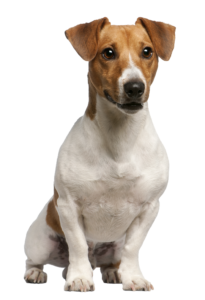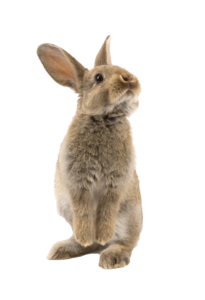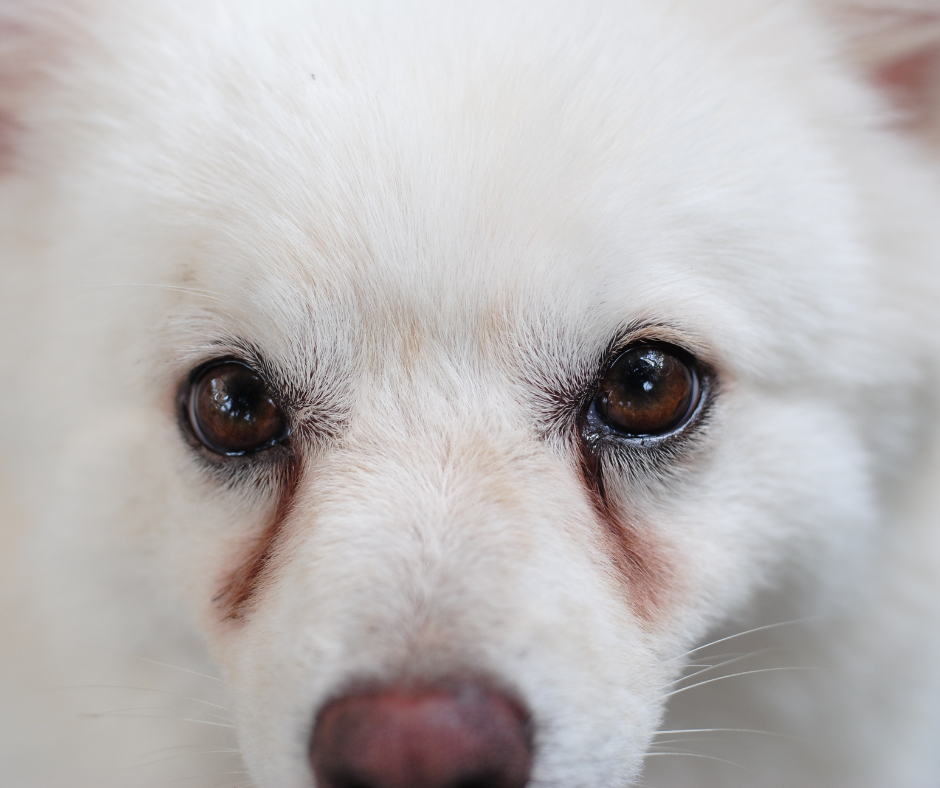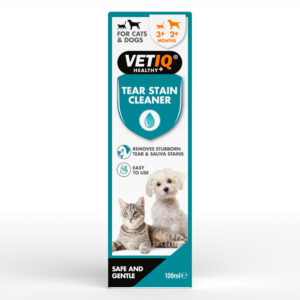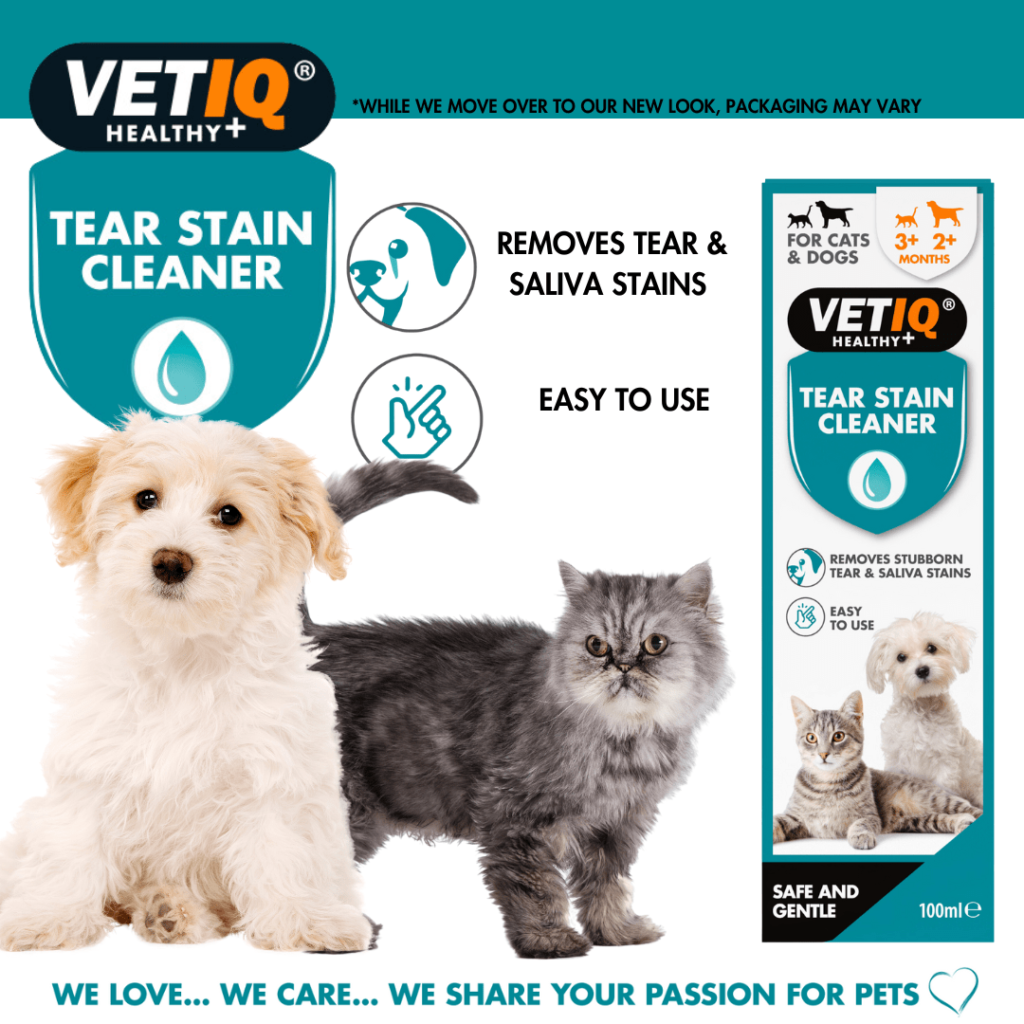Updated: January 2024
The first thing to say is that tear stains don’t mean your dog has been crying! It’s very common for white or light-coated dogs to show this staining, and it’s also regularly seen in small and toy breeds.
Causes of tear staining in dogs
These red or brownish appearing beneath a dog’s eyes are usually caused by epiphora – excessive tear production or by poorly draining tear ducts. It’s always a good idea to get tear staining checked by a vet, before deciding how to treat it. There are many reasons for epiphora, some of which are temporary while others are congenital (related to the dog’s breed):
1. Conjunctivitis
One of the most common reasons for tear stains that appear on mature dogs which haven’t previously had a problem. This is an inflammation of the eye lining which causes discharge. It can be the result of an allergy or injury and in summer it’s often a result of a scratched eyeball from pollen or a grass seed. Eye infections can also be caused by bacteria, viruses, parasites or irritants such as smoke (or vape), shampoo or even air conditioning.
2. Teething
In puppies the emergence of adult teeth can cause tearing.
3. Ear infection
If the tear staining is one sided, your veterinarian will probably check for an ear infection in the ear on the same side, as this can often cause excessive tear production.
4. Allergies
Seasonal allergies like hay fever, allergic responses to new food or even a reaction to cleaning fluids used to wash out food and water bowls can all lead to tear staining.
5. Water
Believe it or not, highly mineralised water can cause tear staining, so don’t give your dog mineral water to drink, but if you live in a high mineral water area, try using bottled water from elsewhere to see if this solves the problem.
6. Diet
Some dogs can experience tearing in relation to food additives such as food colourings used in commercial dog treats, which can be very brightly coloured with food dyes.
7. Glaucoma
Amongst the congenital reasons for tear staining, glaucoma creates a build-up of fluids inside the eye and damages the optic nerve. As in humans, it’s more likely in older dogs. Breeds such as the Chow Chow, Shar-Pei, Jack Russell Terrier, Shih-Tzu, and Husky are particularly prone to glaucoma.
8. Shallow eye sockets
These are often seen in brachycephalic (flat-faced) dogs such as French bulldogs, boxers, Lhasa Apsos, Pekingese and pugs. Typically the bulging, round eyes that make these breeds so charming can also lead to difficulties in closing the eyelid fully, which can result in irritation and damage to the eye surface. Vets often prescribe eyedrops for these dogs.
9. Ingrowing eyelashes
Once again, this is often an inherited problem seen in Cocker Spaniels, Dachshunds, Pekingese and Poodles amongst others. Some breeds that require clipping need extra care as the hair regrowth around the eye can aim inwards rather than outwards if clipped too close: Cairn and West Highland White terriers with their coarse ‘guard hair’ outer coats are particularly prone to this problem.
Managing tear stain markings in dogs
Once you’ve established the cause, and made the necessary changes or obtained any treatment that your vet suggests, the VETIQ Tear Stain Cleaner is a gentle, non-toxic and easy-to-use product that helps reduce the effects of tear staining on your pet’s fur.
With ingredients that dissolve even stubborn stains and others that can actually prevent their re-establishment. This effective treatment can be a welcome addition to your pet’s healthcare routine.
Why not try our Tear Stain Remover product at: https://vetiq.co.uk/product/vetiq-tear-stain-cleaner/, it is non-toxic, safe and easy to use.

